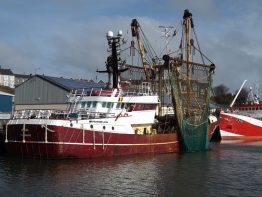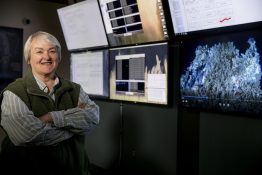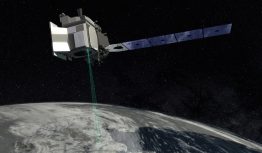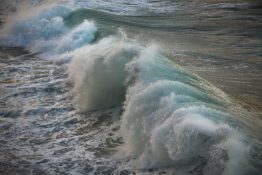After years working on a cabled observatory that monitors the Pacific Northwest seafloor and the water above, a University of Washington engineer decided to share the wonder of the deep sea with younger audiences. The result is “ROPOS and the Underwater Volcano” by Dana Manalang, an engineer at UW’s Applied Physics Laboratory. The book’s illustrator, Hunter Hadaway, is the creative director at the UW-based Center for Environmental Visualization.
Read more at UW Today »High-res data offer most detailed look yet at trawl fishing footprint around the world
About a quarter of the world’s seafood caught in the ocean comes from bottom trawling, a method that involves dragging a net along the ocean’s shelves and slopes to scoop up shrimp, cod, rockfish, sole and other kinds of bottom-dwelling fishes and shellfish. The technique impacts these seafloor ecosystems, because other marine life and habitats can be killed or disturbed unintentionally as nets sweep across the seafloor.
Read more at UW Today »NSF awards contract to carry OOI into the next decade and beyond
The National Science Foundation announced that it has awarded a coalition of academic and oceanographic research organizations a five-year, $220 million contract to operate and maintain the Ocean Observatories Initiative. The coalition, led by the Woods Hole Oceanographic Institution, with direction from the NSF and guidance from the OOI Facilities Board, will include the University of Washington, Oregon State University and Rutgers, The State University of New Jersey.
Read more at UW Today »UW polar scientists advised NASA on upcoming ICESat-2 satellite
NASA launched a new satellite this month that will measure elevation changes on Earth with unprecedented detail. In the air, it will track shifts in the height of polar ice, mountain glaciers and even forest cover around the planet. Two University of Washington polar scientists — Jamie Morison, a polar oceanographer at UW’s School of Oceanography, and Benjamin Smith, a glaciologist at the Applied Physics Lab — advised the ICESat-2 mission that launched Sept.
Read more at UW Today »Shift in large-scale Atlantic circulation causes lower-oxygen water to invade Canada's Gulf of St. Lawrence
The Gulf of St. Lawrence has warmed and lost oxygen faster than almost anywhere else in the global oceans. The broad, biologically rich waterway in Eastern Canada drains North America’s Great Lakes and is popular with fishing boats, whales and tourists. A new study led by the University of Washington looks at the causes of this rapid deoxygenation and links it to two of the ocean’s most powerful currents: the Gulf Stream and the Labrador Current.
Read more at UW Today »





